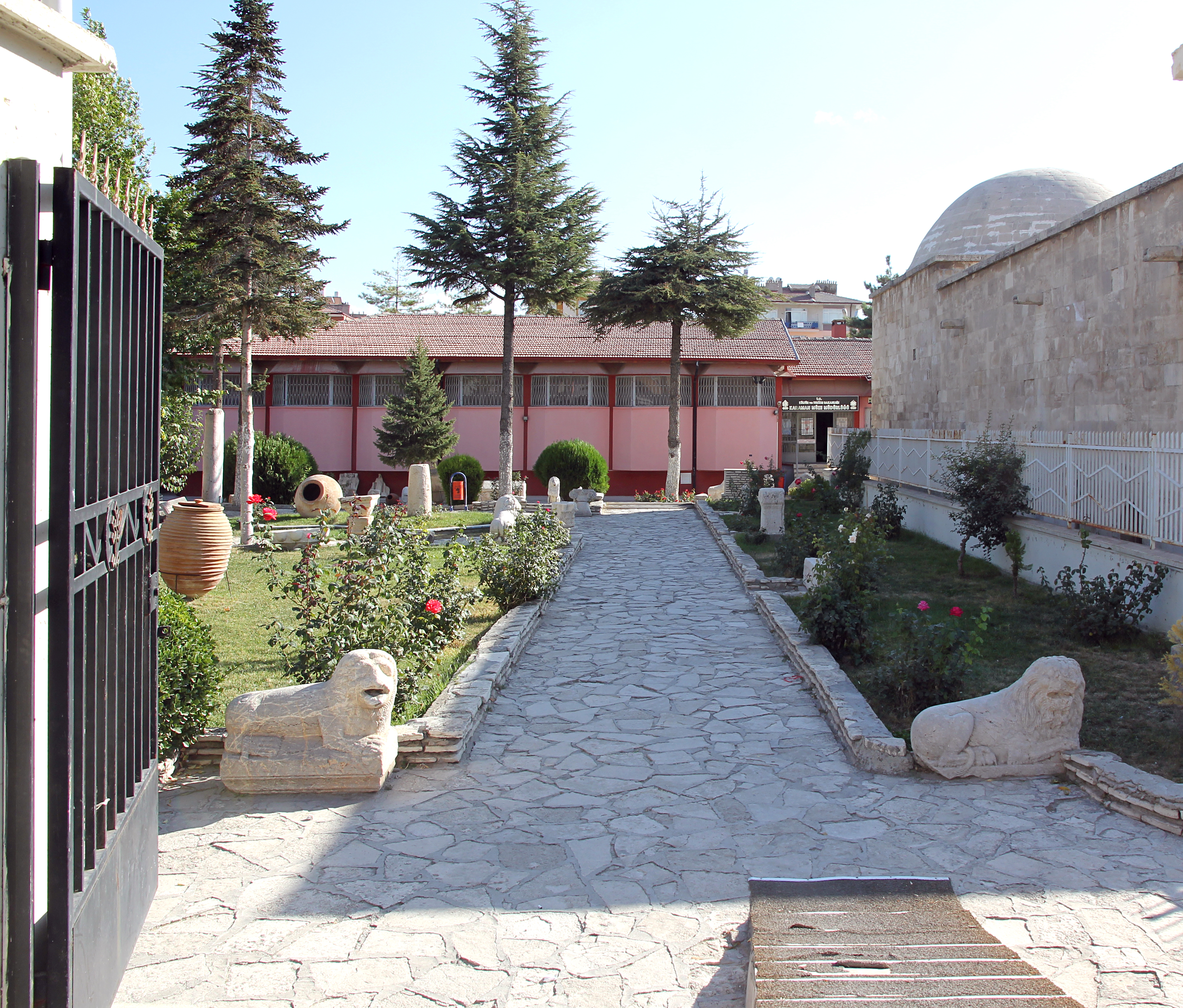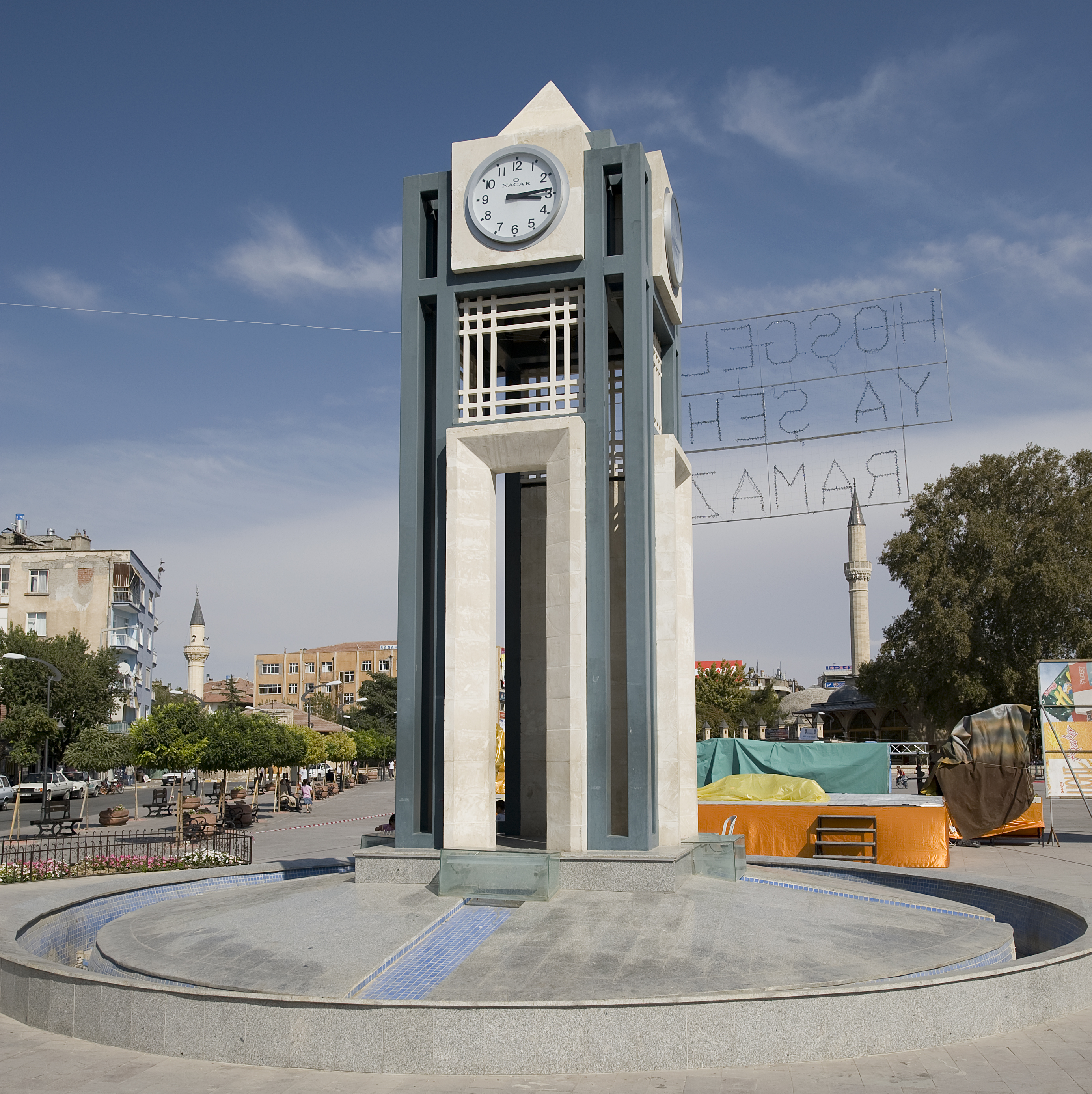Karaman Airport on:
[Wikipedia]
[Google]
[Amazon]
Karaman, historically known as Laranda ( Greek: Λάρανδα), is a city in south central Turkey, located in Central Anatolia, north of the Taurus Mountains, about south of Konya. It is the capital district of the Karaman Province. According to the 2000 census, the population of the province is 231,872 of which 132,064 live in the town of Karaman. The district covers an area of , and the town lies at an average elevation of . The Karaman Museum is one of the major sights.

 In ancient times, Karaman was known as Laranda ( el, Λάρανδα). In the 6th century BC it came under Achaemenid rule until 322 BC, when it was destroyed by Perdiccas, a former general of Alexander the Great, after he had defeated Ariarathes I, king of Cappadocia.
It later became a seat of Isaurian pirates. At some point it was possessed by
In ancient times, Karaman was known as Laranda ( el, Λάρανδα). In the 6th century BC it came under Achaemenid rule until 322 BC, when it was destroyed by Perdiccas, a former general of Alexander the Great, after he had defeated Ariarathes I, king of Cappadocia.
It later became a seat of Isaurian pirates. At some point it was possessed by  There was a Roman Catholic titular see for the city.
The poet Yunus Emre () resided in Karaman during his later years and is believed to lie buried beside the Yunus Emre Mosque. A small adjacent park is adorned with quotations from his verse, many of them graffiti-splattered. In 1222, the
There was a Roman Catholic titular see for the city.
The poet Yunus Emre () resided in Karaman during his later years and is believed to lie buried beside the Yunus Emre Mosque. A small adjacent park is adorned with quotations from his verse, many of them graffiti-splattered. In 1222, the
/ref> * Peisander of Laranda an epic poet, the son of the poet Nestor.
File:Karaman_Eski_Kütüphane_4722.jpg, Karaman Street view
File:Karaman 2144.jpg, Karaman Nefesi Sultan Medresesi monumental entrance
File:Karaman 4808.jpg, Karaman Medrese of Nefesi Sultan
File:Karaman 2149.jpg, Karaman Hac Beyler Mosque Entrance
File:Karaman 4780.jpg, Karaman Haci Beyler Camisi entrance
File:Karaman 2199.jpg, Karaman Ibrahim Bey Imareti door
File:Karaman 4846.jpg, Karaman Ibrahim Bey Mosque
File:Istanbul june 2008 2805.jpg, Ibrahim Bey Mihrab in Çinili Köşk
File:Karaman 4856.jpg, Karaman Castle Mosque and surroundings
File:Karaman 2230.jpg, Karaman Castle mosque
File:Karaman 4768.jpg, Karaman Ak Tekke interior
File:Karaman 4862.jpg, Karaman Castle Exterior
File:Karaman 4863.jpg, Karaman Castle Interior
File:Karaman Museum 2067.jpg, Karaman Museum Can Hasan I Pottery
File:Karaman Museum 2063.jpg, Karaman Museum Iconostasis doors
File:Karaman Museum 2082.jpg, Karaman Museum Kadın fez süsü
File:Karaman Museum 2187.jpg, Karaman Museum Cowry shell adorned objects

Etymology
The town owes its name toKaraman Bey
Karaman, historically known as Laranda (Greek: Λάρανδα), is a city in south central Turkey, located in Central Anatolia, north of the Taurus Mountains, about south of Konya. It is the capital district of the Karaman Province. According to ...
, who was one of the rulers of the Karamanid dynasty. The former name ''Laranda'' which in turn comes from the Luwian language ''Larawanda'', literally means "sandy, a sandy place".
History
 In ancient times, Karaman was known as Laranda ( el, Λάρανδα). In the 6th century BC it came under Achaemenid rule until 322 BC, when it was destroyed by Perdiccas, a former general of Alexander the Great, after he had defeated Ariarathes I, king of Cappadocia.
It later became a seat of Isaurian pirates. At some point it was possessed by
In ancient times, Karaman was known as Laranda ( el, Λάρανδα). In the 6th century BC it came under Achaemenid rule until 322 BC, when it was destroyed by Perdiccas, a former general of Alexander the Great, after he had defeated Ariarathes I, king of Cappadocia.
It later became a seat of Isaurian pirates. At some point it was possessed by Antipater of Derbe Antipater of Derbe ( grc, Ἀντίπατρος) was a tyrant or prince of Derbe. He was a friend of Cicero's, one of whose letters, of uncertain date, is addressed on Antipater's behalf to Quintus Philippus, proconsul of the province of Asia, who w ...
.
It belonged to the Roman and later Byzantine Empires until it was captured by the Seljuks in the early 12th century. Karaman was occupied by Frederick Barbarossa
Frederick Barbarossa (December 1122 – 10 June 1190), also known as Frederick I (german: link=no, Friedrich I, it, Federico I), was the Holy Roman Emperor from 1155 until his death 35 years later. He was elected King of Germany in Frankfurt on ...
in 1190 and by the Armenian Kingdom of Cilicia
The Armenian Kingdom of Cilicia (Middle Armenian: , '), also known as Cilician Armenia ( hy, Կիլիկեան Հայաստան, '), Lesser Armenia, Little Armenia or New Armenia, and formerly known as the Armenian Principality of Cilicia ( hy, ...
between 1211 and 1216. In 1256, the town was taken by Karaman Bey and was renamed Karaman in his honour. From 1275, Karaman was the capital of the Karamanid beylik.
In 1468 the Karamanids were conquered by the Ottomans and in 1483 the capital of the province was moved to Konya. Karaman has retained ruins of a Karamanid castle and some walls, two mosques
A mosque (; from ar, مَسْجِد, masjid, ; literally "place of ritual prostration"), also called masjid, is a place of prayer for Muslims. Mosques are usually covered buildings, but can be any place where prayers ( sujud) are performed, i ...
and a Koran school (''madrasah
Madrasa (, also , ; Arabic: مدرسة , pl. , ) is the Arabic word for any type of educational institution, secular or religious (of any religion), whether for elementary instruction or higher learning. The word is variously transliterated '' ...
'') from that age. A mihrab
Mihrab ( ar, محراب, ', pl. ') is a niche in the wall of a mosque that indicates the ''qibla'', the direction of the Kaaba in Mecca towards which Muslims should face when praying. The wall in which a ''mihrab'' appears is thus the "qibla w ...
from a mosque from Karaman can now be found in the Çinili Pavilion near the Archeology Museum
An archaeology museum is a museum that specializes in the display of archaeological
Types
Many archaeology museum are in the open air, such as the Ancient Agora of Athens and the Roman Forum. Others display artifacts inside buildings, such as N ...
in Istanbul.
The Karamans were Cappadocian Turkomans who fought the Ottomans on the side of the Comnenes, became Christian and migrated westwards.
 There was a Roman Catholic titular see for the city.
The poet Yunus Emre () resided in Karaman during his later years and is believed to lie buried beside the Yunus Emre Mosque. A small adjacent park is adorned with quotations from his verse, many of them graffiti-splattered. In 1222, the
There was a Roman Catholic titular see for the city.
The poet Yunus Emre () resided in Karaman during his later years and is believed to lie buried beside the Yunus Emre Mosque. A small adjacent park is adorned with quotations from his verse, many of them graffiti-splattered. In 1222, the Sufi
Sufism ( ar, ''aṣ-ṣūfiyya''), also known as Tasawwuf ( ''at-taṣawwuf''), is a mystic body of religious practice, found mainly within Sunni Islam but also within Shia Islam, which is characterized by a focus on Islamic spirituality, ...
preacher Bahaeddin Veled arrived in town with his family, and the Karamanoğlu emir built a ''madrasah'' to accommodate them. Veled's son was the famous Rumi
Jalāl al-Dīn Muḥammad Rūmī ( fa, جلالالدین محمد رومی), also known as Jalāl al-Dīn Muḥammad Balkhī (), Mevlânâ/Mawlānā ( fa, مولانا, lit= our master) and Mevlevî/Mawlawī ( fa, مولوی, lit= my ma ...
, who married his wife, Gevher Hatun, while his family was living in Karaman. It was here, too, that Rumi's mother died in 1224. She was buried, along with other family members, in the Aktekke Mosque (also known as the Mader-i Mevlana Cami), which Alaeddin Ali Bey had built to replace the original ''madrasah'' in 1370., todayszaman.com
When Thomas Jefferson fought Libya's Barbary pirates, he replaced one member of the al-Qaramanli dynasty with another as Pasha.
Notable people
*Nestor of Laranda
Lucius Septimius Nestor ( grc, Λεύκιος Σεπτίμιος Νέστωρ) also known as Nestor of Laranda (Νέστωρ Λαρανδεύς), was a Greek poet who lived during the late-second and early-third centuries AD.
According to Strabo ...
, an epic poet, the father of the poet Peisander.Suda Encyclopedia, §nu.261/ref> * Peisander of Laranda an epic poet, the son of the poet Nestor.
Karamanlides
The bearers of the Greek name Karamanlis as well as other surnames beginning with "Karaman" are a toponymic surname for the town.Gallery
Climate
Karaman has a cold semi-arid climate under Köppen climate classification (''BSk'') and acontinental climate
Continental climates often have a significant annual variation in temperature (warm summers and cold winters). They tend to occur in the middle latitudes (40 to 55 north), within large landmasses where prevailing winds blow overland bringing som ...
under the Trewartha climate classification (''Dc''), with hot, dry summers and cold, snowy winters. Karaman is generally very sunny, with almost 3000 hours of sunshine per year.
See also
* Anatolian TigersReferences
External links
{{Authority control Archaeological sites in Central Anatolia Cities in Turkey Populated places in Karaman Province Karamanids Districts of Karaman Province Lycaonia